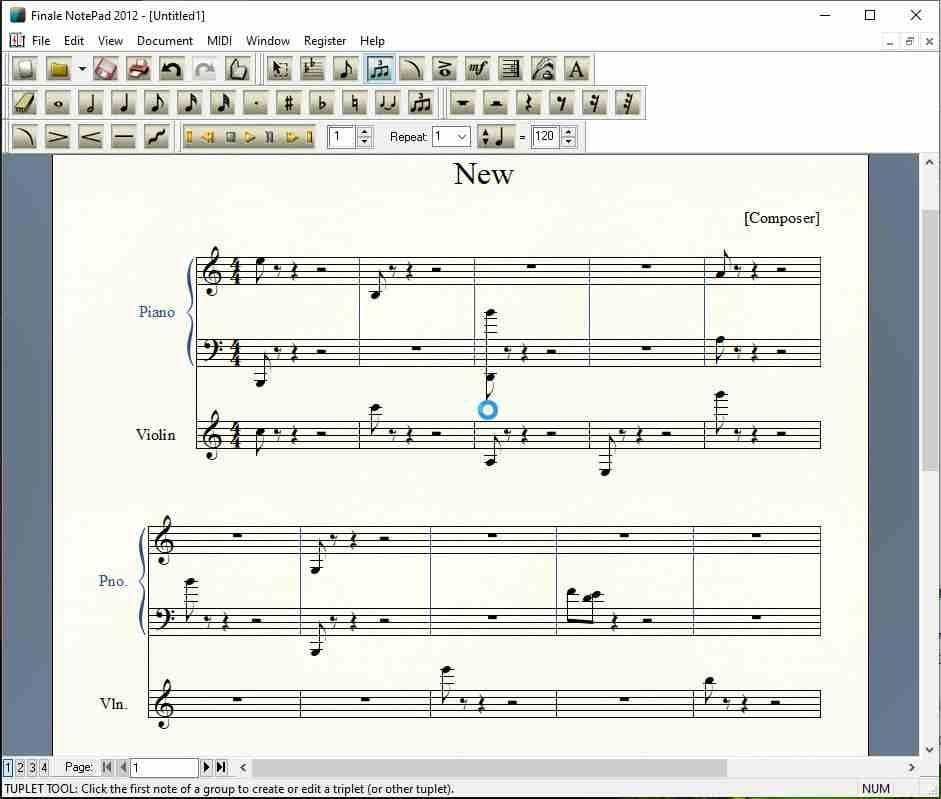

What if you could just enter notes and rests, articulations, phrasing and text, define a page size and margins, and the software would automate nearly all of the little details to make the music look great on the page? Magical, right? But collision avoidance of articulations is just the starting point for any good layout.
Finale software program notes manual#
Music notation software has evolved considerable over the last 20 years, A goal for Finale and the other big players in this space continues to be automation eliminating, as much as possible, the need for manual edits.įor instance, as of Finale 26, when you add more than one articulation to a note, they stack intelligently and automatically adjust to avoid collisions with slurs. more > “X / Cross Noteheads in Music Notation” (for drum set writing, there is an actual “ghost” notehead, which is a regular notehead in parenthesis.)Ĭross (x) noteheads can also be used as a special effect to indicate hand / finger damping of instruments such as guitar, or tuned percussion such as vibraphone. And in jazz charts, X noteheads can be used to indicate “ghost” notes in a melodic line. In both instrumental and vocal writing, they can be used to indicate notes of indefinite pitch. In vocal music, x noteheads are often used tor spoken text, or for unvoiced sounds / vocal effects. For drum set, particularly in jazz or rock charts, cymbals are typically the most active part, and X noteheads help these stand out from the other parts on a 5 line staff. In percussion writing, they are the go-to for non-pitched metallophone instruments such as cymbals or tamtam or gong. X noteheads, also referred to as “cross” or “crossed” noteheads have a number of functions in modern music notation. Original press release from November 22nd can be found here. Please consider joining the beta program to let MakeMusic know how it works for you in order to make the plug-in as useful and widely available as possible. Batch export no longer prompts for saving after each file.Metronome marks with numeric ranges now export correctly.Text that mixes dynamics or musical symbols with words now export correctly.System directions export with the system attribute, providing better results when creating parts from an imported score.Many more standard symbols are now exported.Page-aligned text is now exported except for headers and footers.Dynamic parts can be exported all at once using the new Export Parts to MusicXML menu item.Cross-staff notation is exported starting with Sibelius 2021.9.Concert scores with octave-transposing parts such as guitar and piccolo now export correctly.Concert scores now export transposition information, including alternate clefs for transposed parts.There will be 50 new features and fixes available in the initial beta release. Restricting to later versions of Sibelius makes it much easier to support the plug-in and make use of the latest ManuScript features. The Dolet 8 for Sibelius plug-in requires Sibelius 2019.5 or later.

If accepted, you will receive information about accessing the beta versions during the week of November 29. This will let them know what type of test coverage they will be getting in terms of both Sibelius versions and applications that will be making use of the exported MusicXML files. To apply for the beta test, please fill out the application form. This should make it easier for people to transfer their music from Sibelius into SmartMusic, Finale, and other music notation apps. MakeMusic wanted to take advantage of the new features of both MusicXML 4.0 and Sibelius’s ManuScript programming language to get better MusicXML files out of Sibelius. It has been over five years since the plug-in has been updated.

Original development was centered around being able to transfer Sibelius files into MakeMusic’s SmartMusic more easily, but it was soon apparent that this would be useful more generally.
Finale software program notes update#
Over the past few months MakeMusic has been working to update their free Dolet® for Sibelius plug-in for exporting MusicXML files from Sibelius. This press release just appeared on the website and I thought it worth sharing (source: )


 0 kommentar(er)
0 kommentar(er)
